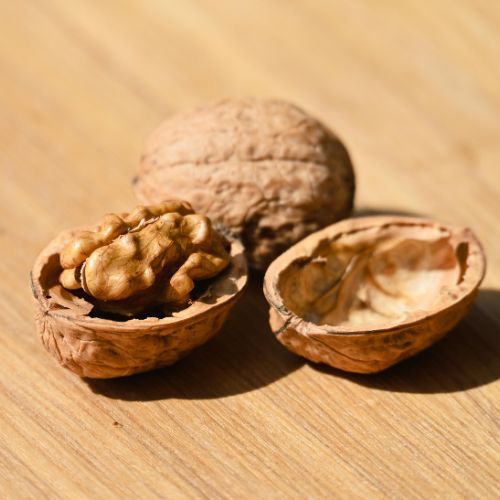Vulvodynia

Vulvodynia is a chronic and often misunderstood condition that affects the vulva, the external part of a woman’s genital area. Despite its impact on many women’s lives, vulvodynia remains underdiagnosed and underdiscussed.
This blog aims to shed light on the condition, provide information on its symptoms, causes, and available treatment options, and offer guidance to those navigating life with vulvodynia.
What is Vulvodynia?
Vulvodynia is characterized by persistent pain or discomfort in the vulvar area, without an obvious cause or visible signs of injury or infection. This pain can vary in intensity and may feel like burning, stinging, itching, or soreness.
For some women, the discomfort can be constant, while others may experience flare-ups triggered by specific activities, such as sitting for long periods, wearing tight clothing, or having sexual intercourse.
While vulvodynia is not a life-threatening condition, it can have a profound effect on a woman’s daily life, affecting her physical health, emotional well-being, and quality of life.
Common Symptoms of Vulvodynia
Vulvodynia symptoms can vary greatly between individuals. Some women experience mild discomfort, while others endure more severe pain. The most common symptoms include:
- Burning or stinging sensations: This is the most frequently reported symptom, often described as a hot or sharp pain.
- Pain during sexual intercourse (dyspareunia): Many women with vulvodynia report pain during or after sex, making intimacy difficult or impossible.
- Soreness or tenderness: The vulva may feel sore or tender to the touch, making everyday activities like sitting uncomfortable.
- Itching or rawness: Some women experience a sensation of itching or irritation, similar to an allergic reaction, though it’s not caused by an allergy.
- Pain with prolonged sitting or tight clothing: Activities that put pressure on the vulvar area, such as sitting for long periods or wearing tight clothing, can increase discomfort.
The pain can be sporadic or continuous, and there may be periods of relief between flare-ups.
What Causes Vulvodynia?
The exact cause of vulvodynia remains unclear, but several potential factors may contribute to its development.
Understanding these potential causes can help women explore possible treatment options:
- Nerve Irritation or Damage: One of the leading theories behind vulvodynia is that it may result from nerve damage or hypersensitivity. The nerves in the vulvar region may become irritated, leading to chronic pain even without any obvious physical injury.
- Pelvic Floor Dysfunction: The muscles of the pelvic floor can become tight or weak, leading to pelvic pain and discomfort. Tight pelvic floor muscles can put pressure on the vulvar area, causing pain during daily activities and sexual intercourse.
- Hormonal Fluctuations: Changes in hormone levels, particularly during pregnancy, menopause, or after birth control use, may affect the vulva’s sensitivity and lead to vulvodynia in some women.
- Previous Infections or Inflammation: A history of yeast infections, urinary tract infections, or other inflammatory conditions in the genital area may be linked to the development of vulvodynia. In some cases, an infection can trigger a lasting pain response in the nerves.
- Genetic and Environmental Factors: While not fully understood, genetics and environmental factors such as stress or trauma may increase the likelihood of developing vulvodynia. For example, a history of sexual abuse may make women more prone to experiencing vulvodynia.
- Allergies or Irritants: Sensitivity to certain soaps, lotions, or laundry detergents can cause irritation to the vulvar area, and in some cases, this irritation may trigger vulvodynia symptoms.
Diagnosing Vulvodynia
Diagnosing vulvodynia can be challenging because there are no visible physical signs or tests to confirm the condition. Instead, doctors rely on a combination of medical history, a physical examination, and ruling out other potential causes of pain, such as infections or skin conditions.
If you suspect you have vulvodynia, it’s important to consult with a healthcare professional, such as a gynecologist or pelvic floor physiotherapist. Your doctor or physio may perform a pelvic exam, including a tender point examination, to assess areas of discomfort.
Treatment Options for Vulvodynia
While there is no one-size-fits-all treatment for vulvodynia, several options can help manage symptoms and improve quality of life. Treatment often involves a combination of approaches tailored to the individual’s needs.
Medications:
- Topical treatments: Over-the-counter or prescription creams, such as lidocaine or estrogen, may be used to reduce pain and inflammation.
- Oral medications: Antidepressants, anticonvulsants, or pain relievers may be prescribed to help manage nerve pain and chronic discomfort.
- Hormonal treatments: If hormonal changes are contributing to vulvodynia, hormone therapy or local estrogen treatment may help.
Pelvic Floor Physiotherapy:
- Pelvic floor physiotherapy focused on relaxing and strengthening the pelvic floor muscles can be incredibly beneficial. A pelvic floor physiotherapist can teach relaxation techniques and help alleviate muscle tension in the vulvar area.
Lifestyle Modifications:
- Avoiding irritants: Using gentle, unscented products for hygiene, avoiding tight clothing, and refraining from using harsh soaps or detergents can reduce irritation.
- Dietary changes: Some women find that certain foods, like acidic or spicy foods, can exacerbate symptoms. Keeping a food diary and adjusting your diet may help identify triggers.
Psychological Support:
- Dealing with chronic pain can be emotionally challenging. Many women benefit from counseling or therapy to help cope with the anxiety, depression, or stress that may accompany vulvodynia. Support groups, either online or in person, can provide a sense of community and reduce feelings of isolation.
Alternative Therapies:
- Some women find relief through alternative treatments, such as acupuncture, biofeedback, or mindfulness meditation. These therapies can help with pain management and stress reduction.
Living with Vulvodynia
Living with vulvodynia can be frustrating and emotionally challenging, but it’s important to remember that you are not alone. Many women are affected by this condition, and support is available. Reaching out to healthcare professionals, joining support groups, or simply sharing your experience with loved ones can make a world of difference.
Vulvodynia is a condition that requires patience, persistence, and self-care. By educating yourself, seeking appropriate treatment, and advocating for your health, you can take steps toward managing symptoms and improving your quality of life.
Conclusion
Vulvodynia is a complex and often misunderstood condition, but with the right support and treatment, it is possible to live a fulfilling life. If you suspect you have vulvodynia or are dealing with unexplained pain in the vulvar area, don’t hesitate to reach out to a healthcare professional. Early diagnosis and intervention are key to finding relief and managing symptoms.
Remember: your health is important, and you deserve care, understanding, and compassion on your journey to healing.
If you found this post helpful, consider sharing it to raise awareness about vulvodynia. Together, we can help break the silence around this condition and support those who are affected by it.
More from the blog







